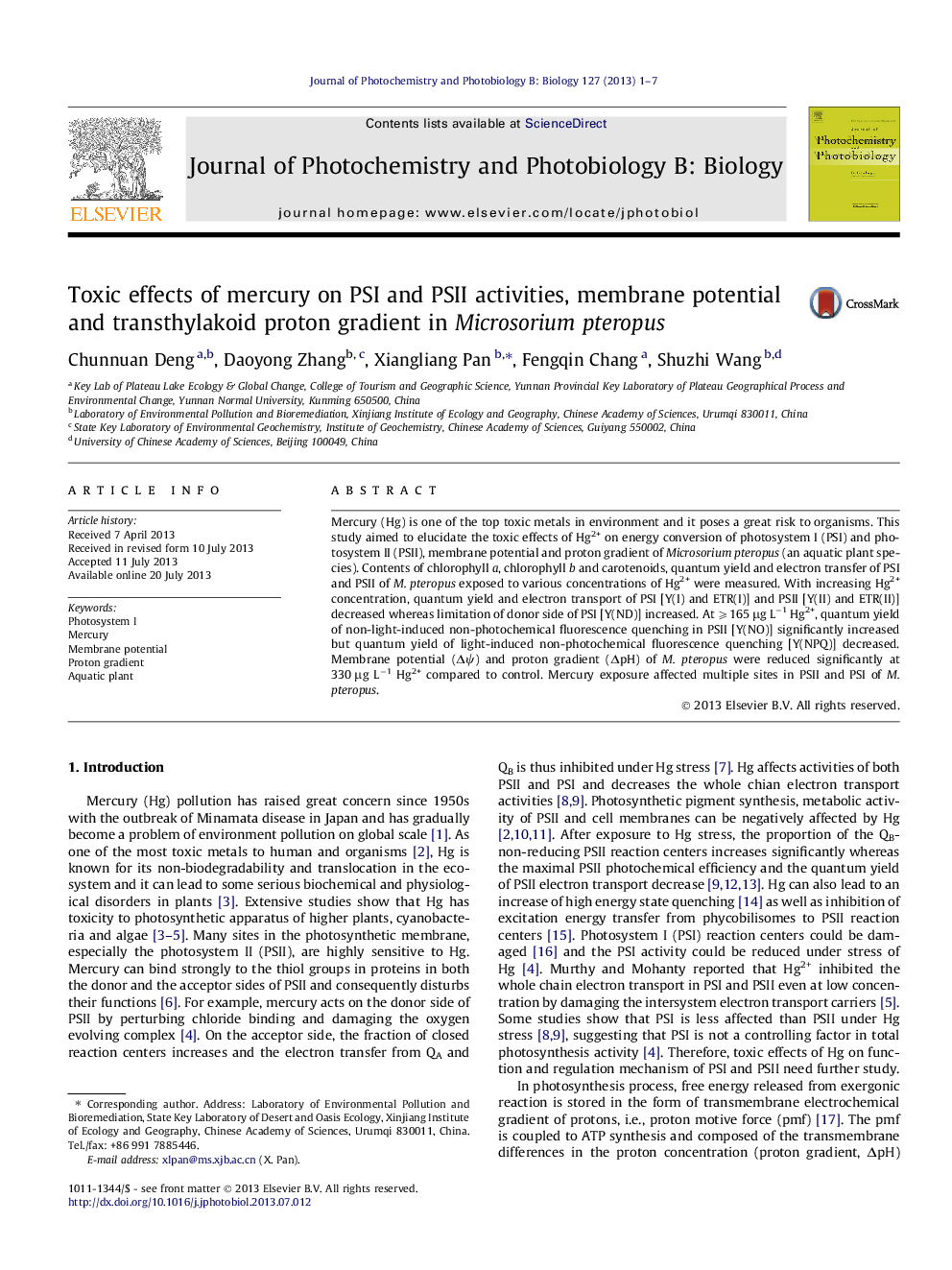| کد مقاله | کد نشریه | سال انتشار | مقاله انگلیسی | نسخه تمام متن |
|---|---|---|---|---|
| 30318 | 44469 | 2013 | 7 صفحه PDF | دانلود رایگان |

• Responses of PSI and PSII of M. pteropus to Hg were simultaneously analyzed.
• Y(I), ETR(I), PSII and ETR(II) decreased with increasing Hg concentration.
• Damage to PSII by Hg was due to failure of dissipation of the excessive excitation energy.
• Δψ and ΔpH of M. pteropus significantly decreased at high levels of Hg.
• Formation of zeaxanthin and H+ efflux from the lumen to the stroma were inhibited.
Mercury (Hg) is one of the top toxic metals in environment and it poses a great risk to organisms. This study aimed to elucidate the toxic effects of Hg2+ on energy conversion of photosystem I (PSI) and photosystem II (PSII), membrane potential and proton gradient of Microsorium pteropus (an aquatic plant species). Contents of chlorophyll a, chlorophyll b and carotenoids, quantum yield and electron transfer of PSI and PSII of M. pteropus exposed to various concentrations of Hg2+ were measured. With increasing Hg2+ concentration, quantum yield and electron transport of PSI [Y(I) and ETR(I)] and PSII [Y(II) and ETR(II)] decreased whereas limitation of donor side of PSI [Y(ND)] increased. At ⩾165 μg L−1 Hg2+, quantum yield of non-light-induced non-photochemical fluorescence quenching in PSII [Y(NO)] significantly increased but quantum yield of light-induced non-photochemical fluorescence quenching [Y(NPQ)] decreased. Membrane potential (Δψ) and proton gradient (ΔpH) of M. pteropus were reduced significantly at 330 μg L−1 Hg2+ compared to control. Mercury exposure affected multiple sites in PSII and PSI of M. pteropus.
Journal: Journal of Photochemistry and Photobiology B: Biology - Volume 127, 5 October 2013, Pages 1–7